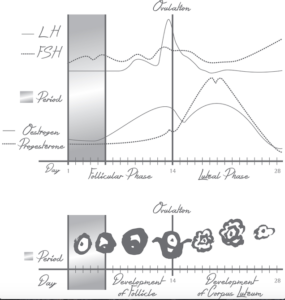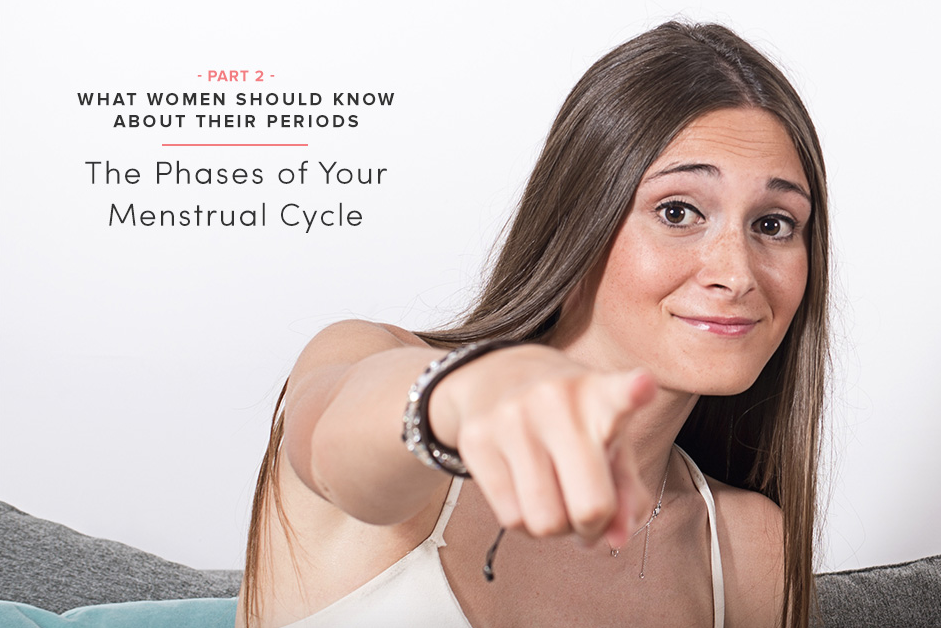So, you’re all experts on your Period cycle (aka menstrual cycle) now after reading ‘What women should know – part 1. And I’m sure I’ve convinced you of how A-MAZING your bodies are. Maybe?
Whether you’re here yet or not, it can take a little time to get your head around it all. The important thing is you are on your way to understanding you’re A-MAZING body. I’ve summarised the information in part 1 into the phases of the menstrual cycle for more clarity.
THE 2 PHASES OF YOUR PERIOD CYCLE
You have two phases of your period cycle and all the organs that are involved and the hormones that are produced will fit into one of these phases. The two phases of your menstrual cycle are:
- The follicular phase
- The luteal phase
I’ve found that putting this information with a diagram helps to tie all the information together, it also helps all you visual learners out there.

THE FOLLICULAR PHASE
The follicular phase includes Day 1 of your period until the day you ovulate.
Within this phase your brain sends the hormone FSH (follicle stimulating hormones) to your ovaries to tell your follicles to grow and mature. As these grow and mature, they produce oestrogen. When oestrogen reaches a threshold, it signals the brain to release LH (luteinising hormones). This triggers the release of the egg out of the follicle and into the fallopian tube (also known as ovulation).
If you look at the image above, all of these things are happening simultaneously. You can see the period is 5 days long, FSH is being secreted, which causes the rise in oestrogen, which triggers LH. As this is happening you can see the follicle (the circle with a spot) getting bigger and at day 14 the egg is being released.
Summary of the follicular phase
- Period occurs
- FSH stimulates follicles to grow
- Oestrogen is the dominant hormone
- Oestrogen reaches a threshold, causing the surge of LH
- LH causes ovulation to occur
THE LUTEAL PHASE
The luteal phase includes the day after ovulation to the day before your next period
Within this phase the follicle (now that the egg has been released into the fallopian tube) turns into the corpus luteum. The corpus luteum produces increasing amounts of progesterone, we also see a dip and another rise in oestrogen as these two hormones prepare for fertilisation and implantation of the egg.
The image above shows the corpus luteum development, which corresponds with progesterone production.
Summary of the luteal phase
- Follicle becomes the corpus luteum
- Corpus luteum produces progesterone (and oestrogen)
- Progesterone is the dominant hormone
- If no pregnancy occurs, the corpus luteum disintegrates and hormones production declines
The lengths of your phases tell me the strength of your dominant hormones in each phase and if your follicle development will produce the healthiest egg you can along with adequate progesterone to sustain a pregnancy. If either phase is too short the follicle may not mature enough or have the right environment for implantation.
I know some of you are thinking, “but I don’t want to have a baby right now”. But the healthiest menstrual cycle that gives a symptom free period is that way because it’s preparing for a baby every single month.
Your fertility is not just about making babies, it’s also about healthy menstrual cycles and hassle-free periods.
If you would like more information on tracking your period cycle, please check out Amanda Howe’s book ‘Know Your Flow’ here.
Love Your Flow,
Amanda xx
